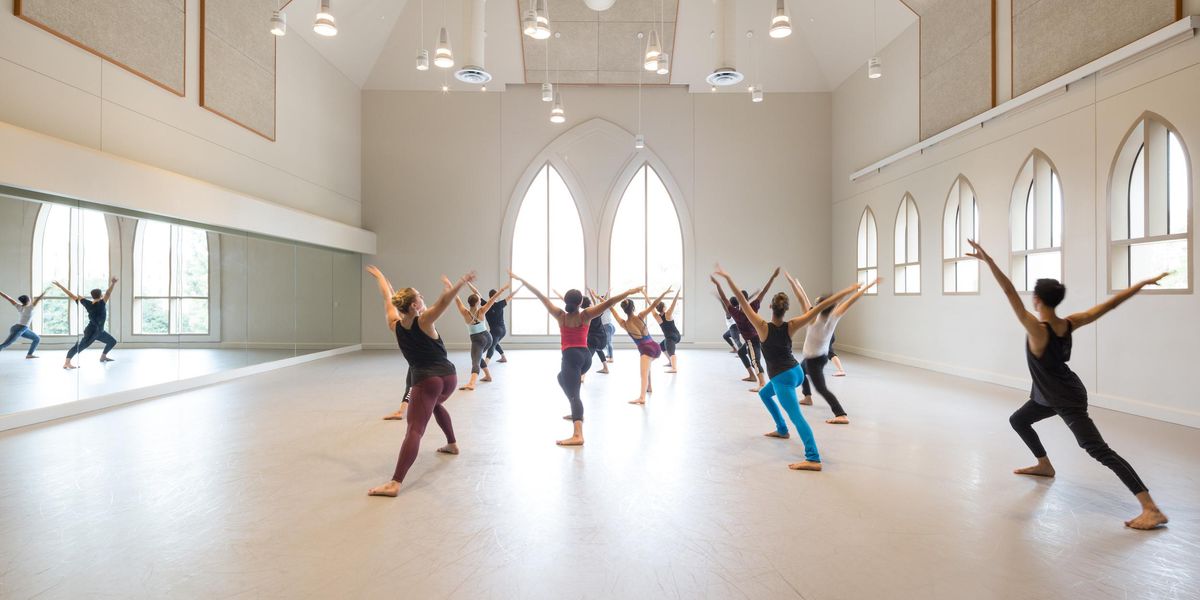Getting Their Game On
You could say basketball runs in Dan Knechtges’ family. His father, Don, was on his high school all-state team. His aunt, Mary Kay, coached a girls’ high school team to the Michigan state championship. Naturally, Dan played also, although he went on to work in musical theater. But who better to direct and choreograph Lysistrata Jones, a show that asks the question, Can you motivate a losing college basketball team by mimicking a classic Greek comedy?
In Aristophanes’ original Lysistrata, written in 411 b.c., wives bar their husbands from the bedroom until they have ended a war. In this one, with a book by Douglas Carter Beane and a score by Lewis Flinn, players’ girlfriends decide to hold out until the team finally puts one in the win column. The show was a surprise hit in a Greenwich Village gymnasium last season, and it arrives on Broadway this month as a kind of dark horse, much like the last Beane-Knechtges collaboration, Xanadu.
That, you may remember, had a roller-disco theme. And his first Broadway musical, The 25th Annual Putnam County Spelling Bee (see “On Broadway,” May 2005), was set in a school gym. So I ask Knechtges, 39, if he is the go-to choreographer for sports musicals. He can’t decide whether to say, “God, I hope so,” or “God, I hope not.” But after a few seconds, he says: “If I have to classify myself, I’m the go-to guy for fun. I subscribe to good show-biz.”
He admits that’s not his first priority when, for example, he works on the commission he’s gotten from BalletMet, in Columbus, Ohio. But in the commercial theater, he says, “There has to be some reckoning for a $125 dollar ticket. I don’t think you should pander to an audience, but I could not in good conscience not be aware of those people who are paying our salaries. I am a slave to what the audience responds to.”
In Lysistrata Jones, he’s given the audience dances rooted in hip hop, cheerleading, and, of course, basketball. Choreographing for the show’s Athens College Spartans, he says, was in some ways easy, in some ways hard. “The fact that it’s an active sport means that it lends itself more easily to dance than, say, golf,” he notes. “But the big challenge was how to illustrate a real basketball game without having 10 players.” He needed to find a way to depict the games without being literal, and he solved it by hanging basketball hoops on each side of the stage and using lighting to indicate when the team is on offense and when they’re on defense.
“Once we figured that out,” he says, “the rest was just a lot of composition with the boys and how they passed the basketball. The defense was even a little easier, because the basketballs would go away. We would then begin a defensive drill with a lot of blocking and jumping. It was very, very hard to figure it all out, but once we did, it actually became a virtue rather than something that held us back.”
The other big problem was taking his “boys,” some with basketball experience and some without, some with dance skills and some without, and turning them into a team—even a bad one. “We had two who were very facile and had a lot of technique, especially in more modern, hip hop kind of stuff. We had one who had no dance experience but who could play basketball extremely well. We had one who was just sort of average. And we had one who hadn’t had any dance or basketball—we ended up making him the butt of the jokes in the dance numbers. Again, it was a challenge but ended up getting a ton of laughs.”
The show marks Knechtges’ debut as a Broadway director, but he says he’s always approached choreography as a director might. “That’s a strength and a weakness,” he says. “Sometimes directors just want choreographers to do steps and not think big-picture. But I always think the big picture is what makes it unique. Dance steps aren’t unique. You get to the uniqueness of those through whatever the big picture is.”
Being his own director—or his own choreographer, if you look at it from the other side—is “liberating,” Knechtges says. “I didn’t have anybody cutting the dance,” he points out. There were times, he says, he felt he “could actually make a number communicate better if it was danced more,” and there was no one to argue the point. “There are many directors or composers or book writers who don’t like dance,” he says. “Doug Beane and Lewis Flinn are both in love with dance. I was surrounded by people who wanted it.” And at the Walter Kerr Theatre, Knechtges says, it will be even better than it was downtown.
“Instead of getting $40 worth,” he chuckles, “they’re going to get $200 worth.”
Sylviane Gold writes on theater for
The New York Times.
Locker-room athletics: Josh Segarra and pals. Photo by Carol Rosegg, Courtesy
Lysistrata Jones.




